Food we eat
1989/04/01 Juandaburre, B. Iturria: Elhuyar aldizkaria
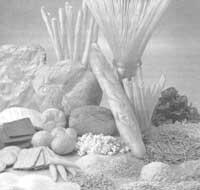
Processing food is not new. Since the birth of agriculture, people developed ways to secure food between two crops. At present, the processing of grain, fish, meat and dairy products continues to indicate that the limited supply of food can be used as efficiently and economically as possible.
So that people around the world do not lose food and maintain its nutritional characteristics, it has developed simple and similar methods. Scottish tenants, for example, manufactured oatmeal cakes and oatmeal soups with dried oats extracted from the sacks kept in summer to combat the winter. Typical Tibetan food is tsanpa, made with ground flour after burning barley grains. This flour is prepared to be taken with tea, soup and stew or to make pastries. More than 2000 Andean people learned to make chuño. Chuño is a dehydrated potato that lasts four years. On the other hand, the drying and salting of meat to combat rot is a widespread practice worldwide.
Processed food also offers the consumer a healthy, safe and attractive product. Bread and beer show how ancient food technologists continued to process wheat and barley.
Yogurt known in Europe in this century, d.C. Since the year 200 food has been common in the Indian and Middle East subcontinent.
Although most of the usual food processing techniques were developed in the Middle East and Asia, many of them were subsequently moved to Europe. Modern food technologists continue to study these techniques and try to improve their performance.
The processing of the food we know today does not meet the same needs as the small baserritarras of yesteryear. The armies and passengers of the men of war need much adequate food that is easy to carry and not to be lost.
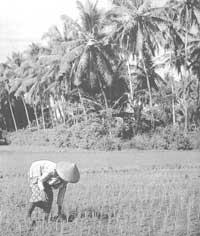
At the end of the 18th century, with the industrialization of Europe, people abandon agriculture and move to work in large factories towards the city. In industrial cities agricultural land was scarce or not. People, instead of growing their food, bought it with the money earned.
School, hospital and factory dining rooms increased demand for “fast food.”
Today, most of the population of developed regions lives in cities. For example, 85% of Britain's population lives in urban centres.
Also in developing countries, the possibilities of economic improvement are concentrated in urban centers, which has caused the hamlet to be abandoned by a large number of people. In addition, due to rapid emigration, local authorities have additional problems in securing the infrastructure needed to supply food in rapidly growing cities.
Small variety of foods
Considering the great diversity of people and types of climate in the world, it is very surprising to see what traditional we are in relation to food. The typical foods we take come from 14 crops. We eat them directly or use them to feed the animals that we then eat.
Most of our diet focuses on carbohydrates. They are our greatest source of energy. In tropical and subtropical regions, most of the sugar comes from sugar cane and sugar beet in temperate regions.
Wheat, corn and rice are the most cultivated crops in the world. In the cold regions barley and oats are important and the same happens with the field in the arid and warm regions of Asia and Africa. Crops predominate in our diet. In addition to being the largest source of energy, they are both the largest source of protein.
In twenty years, from 1963 to 1983, the world population has gone from 3.3 billion to 4.700 people. Worldwide, in order to obtain the additional food needed to cope with population growth, a spectacular increase in crop production has been achieved. Between 1963 and 1983 crop production has gone from 600 million tons to 1.5 billion tons. This enormous growth is based on the use of more productive crops, better control of crop pests and more widespread use of fertilizers.
Chemical changes
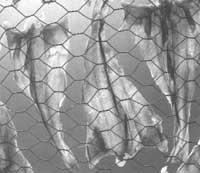
All the foods we take, both of animal and vegetable origin, have enzymes that modify their chemical composition. Lost food, in one way or another, has altered its chemical composition. Living organisms need enzymes. Enzymes are proteins that accelerate the speed of the chemical reactions that cells need to live. Although meat is on the butcher's table or the mushrooms are wrapped in the shelves of the supermarket in plastic paper, enzymes are working. If left alone, enzymes govern chemical reactions and food deteriorates or becomes dangerous.
In food there are many organisms, but microorganisms are our biggest enemies when we talk about food loss. They are present throughout the meal and use their enzymes to get from it the foods they need.
Microbes process long-chain carbohydrates (starch in plants and glycogen in animals) by obtaining short-chain sugars and glucose. These will be used as an energy source. Some microorganisms produce toxins that can harm us, others contaminate us and cause life-threatening diseases.
Microorganisms can convert fats into short-chain fatty acids. Proteins can also be broken by obtaining constituent amino acids, amines, ammonia or sulfur compounds. The presence of these volatile products with penetrating odor is a sign that the food is lost.
If a food contains more than 100 million bacteria per gram, it is considered lost if these organisms have not been intentionally added, for example for fermentation.
Food processing methods are designed to deal with corruption or loss processes caused by enzymes present in the food or by the enzymes of the microorganisms present in it. Moreover, without water enzymes cannot work. • They are very sensitive to changes and can also be damaged and damaged by other chemicals. Food conservation methods take advantage of these weaknesses.
One of the things that is done to make food last longer is to cook. Heat destroys food enzymes and those introduced by microorganisms.
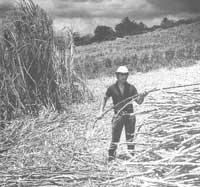
Microorganisms can grow between 4-63ºC, but get the best yield between 30-40ºC. Therefore, in warm tropical and subtropical regions, where most developing countries are located, microorganisms and enzymes are very active and food deteriorates rapidly.
Pasteurization
100 years ago food scientists replaced cooking with softer heat treatments: pasteurization. Pasteurization does not kill all microorganisms, but pathogenic microorganisms that cause the disease.
Pasteurization of milk consists of heating the kupelas to 63ºC for 30 minutes. Another method for pasteurization of milk is: Heat up to 72ºC for 15 seconds.
This process removes pathogenic organisms from milk, but allows others to lose milk. Cooling milk slows down the work of these organisms and prevents loss or pain of milk for longer.
The storage of milk in bottles or in a plastic container, in addition to facilitating the transport of milk, prevents the recontamination of microorganisms present in the air.
Freezing
Freezing excludes deterioration of food. If freezing is relatively fast, the ice crystals that form in the food are too small to pierce the walls of the cells and the structure of the food is not damaged.
In refrigerators enzymes work slower and freezing their work can be completely paralyzed. Although cooling or freezing damage certain microorganisms, they can work again when the temperature is more appropriate.
At the temperature at which frozen foods are stored, -18ºC, enzymes of certain “living” foods such as vegetables and fruits still survive. Many fruits and plants are scalded or placed in the vapors to deactivate these enzymes before freezing them.
Dehydration
The oldest method to store food is drying or dehydration. This method reduces the amount of water enzymes can use.
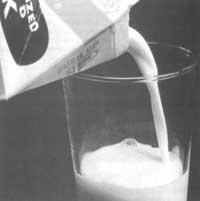
First news of dehydration of meat and fish a. C. They correspond to the year 4000. People put food in solar boilers or over the fire to remove moisture. By evaporating water in the outer layers of food a hard skin is formed that prevents the loss of more moisture. This hardening prevents the entire food from dehydrating.
Current food scientists face this problem by reducing particle size. This increases the surface/volume ratio of the particle and allows a more uniform dehydration of the product.
For example, to prepare powdered milk and powdered coffee, liquid products are injected through the mouth of an atomizer into the rising dry air stream. The process is done in a conical dryer.
More expensive products, such as high quality instant coffee, should retain their subtle aroma after drying. 500 different organic products taste good coffee. Many of these organic products are volatile, easy to evaporate, and provide coffee with a special aroma and aroma. Food scientists freeze and vacuum the coffee mass to deal with this problem. In this situation the ice of the frozen mass is transformed directly into steam, without going through the liquid phase. Volatile compounds cannot evaporate and the aroma of coffee remains.
Why is the cod pink?
Cooking salt, sodium chloride, is probably the oldest preservative. It was used to prepare the first cured meats. Salting, like drying, reduces the amount of water enzymes can use.
The salt formerly used to preserve meat was not only sodium chloride, but contained small amounts of sodium and potassium nitrate. When the meat is immersed in brine, the salt is also absorbed by the deeper layers. Bacteria that suffer high salt concentrations, Micrococcus and Staphylococcus, transform nitrate from brine (V) to nitrite (Dioxonitrate(III)). Nitrite reacts with blood hemoglobin forming nitrosohemoglobin and other compounds that give the meat a special pink color. The color of the rose persists after cooking.
This persistent pink color tells processors and consumers that bacon, bacon, or sausage has been properly cured. This way of preserving food, along with gentle pasteurization, prevents the growth of the spores of the bacterium Clostridium botulinum. Foods contaminated by this bacteria can cause death if they are consumed refrigerated or underheated.
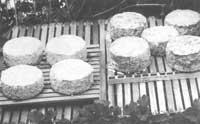
Current food technologists add to the meat certain amounts of sodium chloride, nitrate and nitrite in special conditions of heat and humidity, in order to offer adequate canned meat.
Dutch cheese makers have spent time adding sodium nitrate to cheese in the curing process that lasts several months, so that the cultivation of Clvieridium does not give bad taste to cheese. During breeding, controlling temperature and humidity, cheese lactic acid bacteria release special enzymes that break down proteins and produce a characteristic taste of old cheese.
The usual methods of vinegar or fruit and vegetable marinade are based on the ability of bacteria living in food to produce lactic or acetic acid. Food technologists have taken the method to nature and directly add acids. It is called adobado.
Fermentation
Microorganisms present in food are not always harmful. The fermentation is done by microorganisms obtaining bread, beer, wine and yogurt. Microorganisms use food ingredients, usually carbohydrates or sugars, to regain the energy they need. The process involves transforming sugar into lactic acid into yogurt or cheese and ethanol into wine and beer.
Alcohol and lactic acid are fermentation products, but at the same time other products are formed. Many of them provide a special aroma and flavor to the products that have suffered the fermentation. Diacetylene gives a special flavor to yogurt and propionates to Swiss cheeses.
Inert atmospheres
Chemicals can inhibit the growth of unwanted microorganisms or help desired microorganisms. By changing the atmosphere surrounding food, the same effect can be achieved. Fresh meat is lost by growing bacteria such as Pseudomonas, Alcaligenes or Moraxella. These organisms need oxygen to grow. Lactic acid bacteria increase faster if the carbon dioxide concentration is higher.
Food technologists use and modify the atmosphere around chilled meat. They reduce the amount of oxygen in the air and increase the amount of carbon dioxide. This promotes the proliferation of lactic acid bacteria and prevents the deterioration of meat.
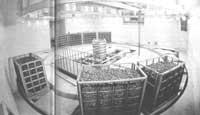
For fresh fruits and vegetables the same technique can be used. The influence of modified atmospheres is limited in itself, but its combination with temperatures close to 0ºC can significantly extend the life of meats, fish, fruits and vegetables.
The taste of future foods
What will the future food industry look like? Biotechnology can play an important role in the dissemination of the harvest. Food plants will grow more in the laboratory and then be planted in the field.
As more of the products that have been fermented and the enzymes responsible for it become known, it will be easier to get the desired product.
Less chemical additives may be used as the word “natural” continues to gain strength. However, food should remain healthy and safe.
The tendency to give more information to the consumer is probably reinforced.
In addition, the best methods of communication will allow access to food around the world and diversify our diet.
Food radiationTo deactivate food microorganisms or parasites, the alternative way of heat is the irradiation of food. In the future it can be very useful. Short-wavelength ionizing radiation from electrons, x-rays, or gamma rays passes through a meal that goes over a conveyor belt. At the same time as it does, the microorganism inactivates or kills food without cooking it. Scientists have worked extensively on food irradiation and have been largely driven by various agencies of the United Nations (Food and Agriculture Agency - FAO -, the World Health Organization and the International Atomic Energy Agency). These organizations have established the maximum doses of food irradiation. This technique is being used selectively in several countries around the world. The US and USSR astronauts take irradiated food to avoid poisons. In Britain, radiated food is given to patients with immune system problems. Insects and parasites are very sensitive to low doses of radiation. For example, if crops stored on farms were irradiated, the amount of grain lost by the work of insects would be considerably reduced. Intermediate doses of irradiation can “pasteurize” foods such as raw chicken, prawns, molluscs... The bacteria of the genera Salmonella and Campylobacter die or are inactivated with this type of dose. Larger doses deactivate spores. There is concern about the perniciousness of irradiated foods, whether foods will have excessive radioactivity after they have been irradiated. However, according to the studies carried out, irradiation does not raise the level of natural radioactivity of food so that it can be appreciated. In short, the advantages of irradiation from food are: it reduces food losses, increases the duration of food and makes the texture of certain foods more pleasant. On the other hand, the main disadvantage is the deterioration of some vitamins, especially vitamin C. |

Gai honi buruzko eduki gehiago
Elhuyarrek garatutako teknologia



